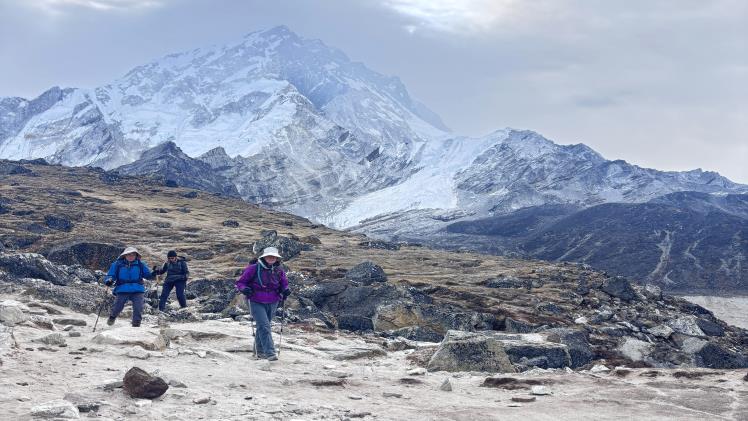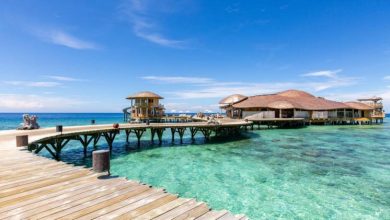12 Truths You Need to Hear Before Trekking to Everest Base Camp

The Everest Base Camp trek is one of the most renowned and sought-after trekking experiences in the world. For many, the goal of standing at the foot of the world’s tallest mountain, Mount Everest (8,849 meters), is a bucket-list achievement. However, this incredible adventure comes with its own set of challenges, surprises, and valuable lessons.
In preparation for the Everest Base Camp Trek, there are several important truths that trekkers should know before embarking on the journey. These tips will help ensure a smoother, safer, and more enjoyable experience, enabling trekkers to avoid common mistakes and make the most out of their journey.
1. Gear Can Be Bought in Kathmandu
One of the biggest concerns for trekkers heading to Everest Base Camp is the cost and availability of appropriate gear. However, there’s no need to panic if something has been forgotten or if the expense of buying new gear seems overwhelming. Kathmandu offers a wide variety of trekking shops, particularly in the Thamel area, where trekkers can find virtually everything needed for the trek.
Many reputable shops sell high-quality gear, and some also offer rental options. Trekking shops like Outdoor Compass, a local store manufacturing its own gear in Nepal, offer excellent products at affordable prices. Items such as down jackets, trekking poles, sleeping bags, and sleeping bag liners can be rented. For trekkers who don’t want to purchase new gear, renting these essentials provides a cost-effective solution.
However, certain items, such as boots and socks, are best brought from home. Trekking boots should be well broken in to avoid blisters, and quality socks are essential for comfort during long days on the trail.
2. Protect Your Face from Pollution in Kathmandu
Before even beginning the trek, it’s important to consider air quality in Kathmandu. The city is known to have some of the worst air pollution in the world. The air can be thick with smog, especially when it hasn’t rained recently.
To avoid respiratory issues before beginning the trek, it’s recommended that trekkers wear a face mask while walking around Kathmandu. This simple step can prevent congestion, sinus issues, and coughs, which could derail the trek before it even begins. Many trekkers who failed to wear face masks in Kathmandu experienced respiratory discomfort before the flight to Lukla, impacting their overall trek experience.
3. Prepare for the Road to Ramechhap
In recent years, the route to Lukla has been redirected through Ramechhap, as this route is more reliable and accessible. However, the drive from Kathmandu to Ramechhap can be long and bumpy, taking anywhere from 6 to 8 hours depending on the road conditions. The road is winding and rough, with parts of the journey passing through riverbeds.
Due to the damage caused by floods in 2024, some sections of the road are especially rough. For those prone to motion sickness, it is essential to bring medication. A widely recommended anti-nausea medication, Zofran, is easily available in Kathmandu, and it is highly effective for alleviating travel sickness on the bumpy ride.
4. The Flight to Lukla is Short but Intense
The flight to Lukla is often a point of concern for trekkers, as it’s known for being one of the most thrilling (and sometimes nerve-wracking) flights in the world. The Lukla airport has a short runway and is situated among the mountainous terrain, making the landing quite dramatic.
However, the flight is only 20 minutes long, and although it may seem intimidating at first, it is a safe and reliable experience. The skilled pilots who operate this route fly multiple times a day and are well-trained for mountain flying. Once safely in Lukla, the adventure truly begins.
While the flight itself may seem daunting, it is one of the most memorable parts of the trek. Pro Tip: Once at the Lukla airport, trekkers should remain alert and pay attention to announcements. Flight times may change, and it is important to stay near the boarding area to avoid missing the flight. Hiring a guide can also help in navigating the chaotic atmosphere of the Lukla airport, as they are well-acquainted with the local procedures.
5. Build in Buffer Days for Weather Delays and Illness
The weather in Lukla can be unpredictable, especially in the mountainous regions, where flights are often delayed or canceled due to unfavorable conditions such as cloud cover, rain, or wind. Trekkers should be prepared for these uncertainties and allow for buffer days in their itinerary.
Building in at least 1 to 2 additional days at the start or end of the trek will alleviate stress in case of unexpected weather delays. This way, trekkers won’t be pressured by a tight schedule, and any weather disruptions won’t compromise their trip.
6. Budget for Possible Helicopter Rides and Emergency Evacuations
While the journey to Everest Base Camp is incredible, it’s important to account for unexpected costs that might arise. Helicopter rides can be an essential part of the trek, especially in cases where trekkers fall ill or need to be evacuated quickly. Helicopter evacuations from places like Namche Bazaar to Lukla or Kathmandu can cost around $250 per person, depending on the situation and availability.
It’s crucial for trekkers to invest in travel insurance that specifically covers emergency evacuations. Some travel insurance plans do not include this coverage, so it’s important to check the fine print before purchasing. A reliable option for trekkers is World Nomads travel insurance, which covers a wide range of emergencies, including helicopter evacuations.
7. Bring Toilet Paper and Wet Wipes
One of the most essential but often overlooked packing items is toilet paper. Toilets along the EBC trek are basic, and many places do not provide toilet paper. It’s important to stock up on toilet paper in Kathmandu or Namche Bazaar before heading up the trail. As the altitude increases, the price of toilet paper also increases, so it’s best to purchase it beforehand.
In addition to toilet paper, wet wipes are invaluable on the trek. With no showers along most of the trail, wet wipes become the next best thing for personal hygiene. They can help keep trekkers feeling fresh after a long day of trekking.
8. Protect Yourself from the “Kumbu Cough”
The Kumbu Cough is a dry, persistent cough caused by the dust and dryness of the trail, especially when trekkers pass through herds of yaks or during windy sections of the trek. To minimize the risk of developing the cough, it’s essential to wear a buff over your nose and mouth. This will protect your lungs from the dust and help keep the airways clear.
Trekkers who fail to wear a buff when trekking in dusty conditions are more likely to develop the Kumbu Cough, which can last throughout the trek and even continue once back home.
9. Hire a Guide
While the Everest Base Camp trail is well-marked, hiring a guide can make a significant difference in the quality of your trekking experience. Guides are trained to help with safety and acclimatization, and they provide valuable insights into the local culture and history of the region.
They also help manage the logistics of the trek, including permits, accommodation, and water refills at each stop. Having a guide allows trekkers to focus on the adventure and leave the details to the experts.
In addition, guides can provide medical checks each day to ensure trekkers are adjusting well to the altitude. This support is invaluable, particularly for first-time trekkers.
10. Treat Your Water
It’s important to treat every drop of water you drink during the trek. Water purification systems such as Aqua Tabs are effective and affordable solutions. These purification tabs can be added to water bottles, making water from streams or taps safe to drink.
Pro Tip: Always make sure your water bottle lid is sealed to prevent contaminants, especially in teahouses that use yak dung for heating, which can release harmful particles into the air.
11. Pack High-Protein Snacks
The trek to Everest Base Camp involves long, exhausting days, and it’s important to maintain energy levels throughout the journey. While food is available at teahouses along the way, high-protein snacks such as beef jerky, protein bars, and nuts are essential for keeping up energy levels. These snacks are lightweight and easy to carry, providing a quick energy boost when needed.
12. Avoid Meat and Bakery Goods
Many trekkers fall ill during the Everest Base Camp trek due to unsafe food. Meat is often transported by porters and is not refrigerated, which increases the risk of foodborne illness. Similarly, bakery goods should be avoided because they can sit out for days without refrigeration, becoming contaminated.
It’s safer to stick to dahl bhat (lentils and rice), fried rice, ramen noodles, and garlic soup, which are commonly found
on the menu and carry less risk. These dishes are filling, nutritious, and much safer.
Final Thoughts
The Everest Base Camp trek is an unforgettable adventure, but it requires careful preparation. By following these tips—purchasing gear in Kathmandu, protecting your health, budgeting for emergencies, and taking the necessary precautions—you’ll be ready for the challenges the trek presents.
With the right preparation, the trek to Everest Base Camp will be a life-changing experience that you’ll cherish forever. Stay informed, pack wisely, and make the most of this incredible journey to the foot of the world’s tallest mountain.


